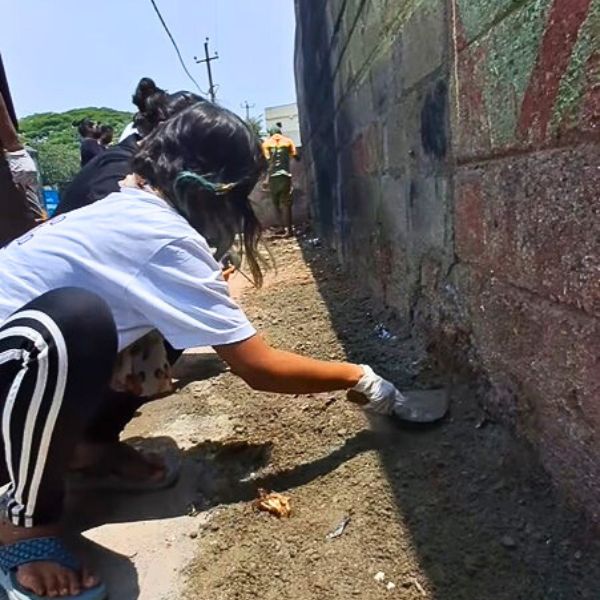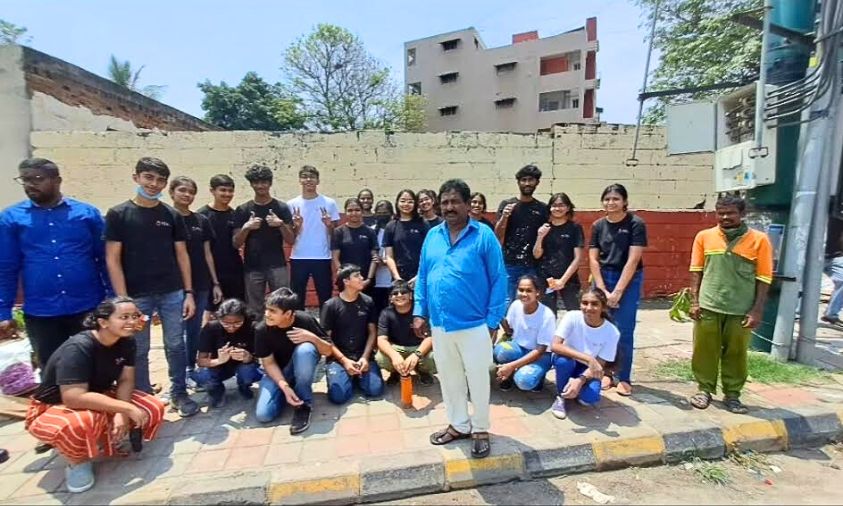The Indian School of Leadership (ISL) is a non-profit organization run with the vision of promoting sustainable economic development, citizen engagement, and innovation in India by developing entrepreneurial, principled, and impact-focused leaders from all backgrounds.
Recently, ISL hosted a group of 20 students as part of its first leadership lab (formerly known as leadership camps) for the year 2023. The 7-day lab took place in Ekya School, BTM Layout, Bangalore. One of the unique experiences ISL offers to those who attend the lab is having hands-on experience by collaborating with an NGO. This time, the Bangalore cohort worked with The Reap Benefit organization to clear out a nearby garbage ‘blackspot.’
A challenging reality on the ground
It started with Shreya and Joseph from Reap Benefit taking the changemakers through the process and briefing them about what they should be doing for the next two hours. Once they reached the spot, the situation looked worse than how it was visualised to be – on one side, around 500 kilograms of waste lay partly decomposed and traces of urination were found. On the other side, debris from a construction site was dumped carelessly. All of this, along with an open transformer and lack of streetlight made the area prone to garbage disposal at night.

The first step was to clear out the waste – both the garbage and construction debris simultaneously. A few of them teamed up to collect the waste and put them in bags whilst others broke down larger pieces of furniture into smaller pieces of wood so the authorities could collect it. A worker from Bruhat Bengaluru Mahanagara Palike (BBMP), the municipal corporation of Bangalore also helped the group clear the waste.
Transforming the Space
The second step in the process consisted of two sub-steps, with the first one being to level the part where there was a lot of waste with cement. The second sub-step was to paint the walls with the colours, cream and red. The biggest challenge here was that the amount of resources they predicted would be sufficient was lesser than what they actually needed. The bag of cement or two boxes of paint were not enough and thus, the wall was given only a single coat of paint. In addition, around noon, the heat started to take a toll on everyone’s productivity.
The power of colours
After a quick energy drink, Shreya and Joseph explained the behaviour science behind the method that was chosen. As the corner of the footpath had the most garbage, it was eliminated by painting the same red colour throughout. Large plants were placed too, which are at eye level to give a sense of territoriality. The colours red and cream were used as they are the same colours used in all government buildings. As a result, if it’s portrayed as being a government-owned place, the waste is less likely to be dumped. They levelled the place to make it feel usable.
Last but not least, the issue of the open transformer and lack of lighting was reported to local authorities. A jam-packed, fun-filled experience with loads of takeaways and learnings finally came to an end, only to be replicated at other places with similar issues.
Images source

